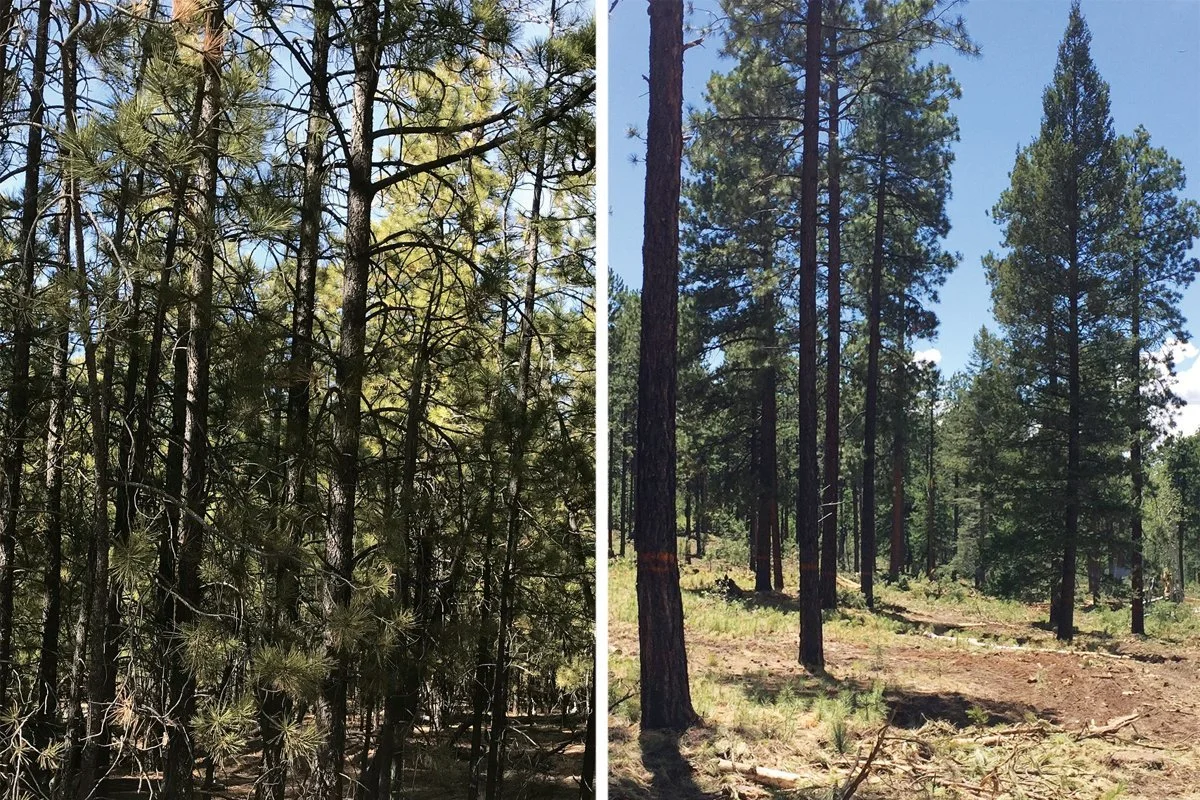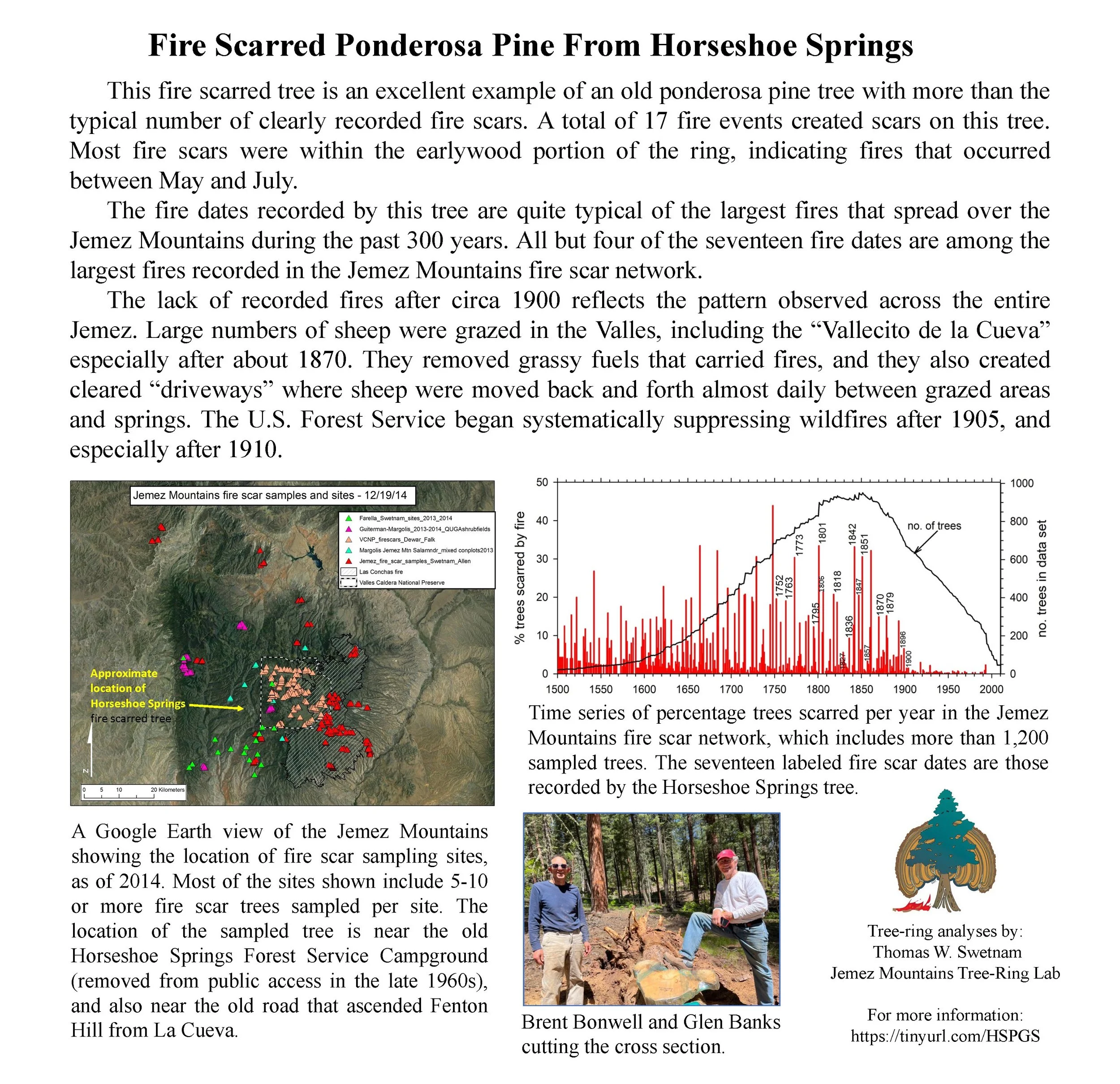Hello FAC NM followers,
Starting the process of working within our communities to become fire adapted is often challenging, and it can be even more difficult to sustain. Making headway requires a force of will, a collective push for change, and ideal conditions coalescing! While the barriers to progress can feel daunting, you are far from alone in your work to build communal resilience. This week, we highlight the success of one community’s partnerships and the extensive wildfire mitigation work that these partnerships have enabled.
Today’s Wildfire Wednesday features:
The story of Horseshoe Springs Association’s (HSA) Jemez Mountains wildfire mitigation work
Takeaways from HSA’s success
Updates and opportunities
Best,
Dayl
Horseshoe Springs Association’s wildfire mitigation work in the Jemez Mountains
Fall scene in the Jemez Mountains captured using a drone camera. Photo by Mario Pratti
Working together for landscape resilience
Picture this: It’s a warm summer day in a lovely, forested neighborhood in the Jemez Mountains of northern New Mexico. Picturesque cabins dot the hillsides and nestle among the trees. The sun is streaming through a canopy of spruce, fir, and pine, the air smells astringent and fresh, and the sounds of equipment and voices are deadened by a hush created by the mature coniferous forest and its soft duff-covered floor. Residents are out in their yards raking pine needles, chipping slash, and pruning and thinning ladder fuels from the forest around their homes. Everyone is pitching in to do the work that can keep their community safe from wildfire. The community recently received wildfire risk mitigation funding from their local Soil and Water Conservation District, a crucial partnership which enables them to complete this work to improve defensible space in the neighborhood. Nearby, on adjacent Forest Service land, contractors are completing a thinning project on hundreds of acres that will further ensure the community’s resilience to fire. All this work lies within the footprint and is one component of a larger cross-jurisdictional project to increase the resilience of forests and watersheds…
If it sounds a bit too idyllic to be true, we invite you to learn about the Horseshoe Springs Association (HSA).
This scene (with some artistic license on the writer’s part) is the story of HSA, a neighborhood of 50 homes and cabins established in the La Cueva area of the Jemez Mountains in the 1950s and 60s. Their community showcases the success enabled by functional partnerships across agencies and organizations.
In the early days of the neighborhood, there were fire and safety rules in place that required cabin owners to rake pine needles within 30 feet of structures or fuel sources such as wood piles and propane tanks—rules which were later incorporated into the Association’s covenants. Community chipper days to process slash have been held by the Association nearly annually for the last 15 years. Moving beyond individual responsibility, the community has actively partnered with the Forest Service for decades. In the early 2000s, forest thinning to reduce tree densities was completed on HSA’s 64 acres of common land through the USDA Forest Land Enhancement Program (FLEP). The Forest Service began thinning 257 acres of National Forest adjacent to the neighborhood in summer of 2023. A recent partnership with the Cuba Soil and Water Conservation District has brought in grant funding to support hazardous fuel reduction by contractors on private land in the community.
Current status and future work
A ponderosa pine forest in the Jemez Mountains, before and after a thinning project. Sue Harrelson/USFS
As of fall 2023, 27 out of 50 cabin owners in HSA have signed up for thinning through the Cuba SWCD grant and about half of those have already had their property thinned. Another 10-15 cabins were already at or below the target density level, leaving fewer than twenty percent of the cabins with higher-than-recommended tree density. In addition, HSA has applied to have 20 acres of common land thinned under the grant program, focusing on the areas closest to possible ignition sources. This community-level work dovetails with the mission of the 2-3-2 Cohesive Strategy Partnership, a landscape-scale effort to promote resilient forests and watersheds in northern New Mexico and Southern Colorado. HSA lies within the project boundary of the 2-3-2, allowing for each project to leverage the funding and forest resilience work of the other by creating landscape-scale restoration areas. This overlap will further enhance the Association’s dedicated mitigation work.
Horseshoe Springs Association is well on its way to becoming fully realized as a Fire Adapted Community, but they couldn’t have done it alone. It is through cross-boundary partnerships and landscape-scale work that they continue to protect themselves from wildfires that regularly move through the Jemez Mountains. When thinking about our work in forest resilience, it is important to acknowledge that much of our regional land management wisdom is derived from the selective logging performed by Ancestral Pueblo people who coexisted with frequent fires in the Jemez. The work of HSA also takes root in the residents’ respect for fire and their understanding that “fire is a question of when, not if”, in the words of resident Brent Bonwell.
Learning from the Success of Others
Close calls as a call to action
This map shows the proximity of the Cerro Pelado Fire to local communities on May 4, 2022. La Cueva, where HSA is located, was 7 miles from the fire. Image sourced from Los Alamos Reporter.
Wildfires have come close to the community - the 2022 Cerro Pelado fire came within seven miles of the neighborhood, and large fires in the past, such as Las Conchas in 2011 and Thompson Ridge in 2013, have loomed threateningly nearby. While fire has played an important ecological role in ponderosa pine forests for millennia and historical tree-ring fire scar evidence shows that the large size of these modern fires is not unusual, the high-severity tree-killing nature of them is (see this story map of fires in the Jemez). That catastrophic quality is precisely what threatens neighborhoods in the wildland urban interface (WUI), like Horseshoe Springs, and compels them to accelerate their community protection efforts.
Learn more about the fire history of the La Cueva area of the Jemez Mountains in this report by Dendrochrologist Dr. Tom Swetnam.
Listen to Tom speak about fire history in the area at 12pm on November 14 in a FACNM webinar on Fire, Forests, and People in the Jemez Mountains, NM.
Key takeaways from HSA’s work
Communication across boundaries is essential. Without a strong relationship with the Forest Service, Cuba SWCD, and others, much of the thinning work in and around Horseshoe Springs may never have been completed.
Opportunities to fund these projects are important—without the money, how can we do the work? Property owners within the Cuba Soil and Water Conservation District had the opportunity to enter into cost-share agreements and have up to 80% of the cost of their thinning work paid. Local grant programs like these are essential to empowering communities. FAC NM offers microgrants to provide seed funding for community protection efforts like this.
This work takes time. It has taken HSA decades, the dedication of individual landowners, and opportunistic partnerships to reach the point they are at now, with over 80% of properties in the neighborhood thinned to a recommended tree density.
Everyone has a role to play in fire adaptation and ecological restoration. It is through collective action, education, and overlapping projects that we will see large-scale fire adaptation.
Upcoming Events and Opportunities
Webinars
November 1st, 2023, 10:00 - 11:30am MDT: Smoke: State of the Science
Join for a live virtual session focused on the State of the Science about smoke. This facilitated panel discussion will be guided by your questions. Registration is required. Live session will be recorded and posted on the Rocky Mountain Research Station website here: SYCU - Webinars | US Forest Service Research and Development
December 14th, 2023 9am - 10:30am ET: The Future is Smoky, one of four Fueling Collaboration sessions.
With increasing wildfire activity due to changes in climate, smoke will likely become more prevalent and continue to have an effect on society. Earlier this year, smoke from Canada wildfires lowered air quality in the eastern U.S. to its worst levels in recorded history. As the climate heats up and creates drier conditions, smoky skies will grow increasingly common. Health concerns and prescribed burning actions needed to restore functioning ecosystems will be impacted by already smoky conditions across the country. Panelists include research meteorologists, air quality experts, and fire practitioners. Together, they will explore how we can address and adapt to a smoky future.






